 Alert: 4/23/2024
A sudden release from upstream dams in China will cause the river level to rise 0.80m at Chiang Saen, Thailand on April 24; at Pak Beng, Laos on April 25; at Luang Prabang on April 26; and at Chiang Khan, Thailand on April 30.
Alert: 4/23/2024
A sudden release from upstream dams in China will cause the river level to rise 0.80m at Chiang Saen, Thailand on April 24; at Pak Beng, Laos on April 25; at Luang Prabang on April 26; and at Chiang Khan, Thailand on April 30.
Spotlight

Erratic Fluctuations from China’s Jinghong Dam Damage Downstream Ecology
For the last 11 days, China’s Jinghong Dam has damaged the ecology of the Mekong River by repeatedly releasing water during afternoon and evening for hydropower production and then restricting water overnight. This way of operating a dam is called hydropeaking, and it maximizes hydropower generation during the hours electricity demand is highest by releasing water in sudden bursts. This is causing the river level to rise by about 0.80 meters at Jinghong and then fall again within a 24-hour period. The peaks and valleys introduced to a river’s ecology are extremely damaging to fish habitats and fish migration.
What Happened Last Week?
- Where’s the Water: Dry season releases for hydropower production were significant throughout the basin last week with a net release of just over 1 billion cubic meters. An unusual flow restriction of 370 million cubic meters was observed at Nuozhadu. Without this restriction, total releases last week would have been much higher. The most significant releases came from Huangdeng (PRC, 116 million cubic meters), Xiaowan (PRC, 389 million cubic meters), Nam Ngum 2 (LAO, 158 million cubic meters), and Theun Hinboun Expansion (LAO, 343 million cubic meters). Show me the dams.
- River Levels: River levels are at normal or slightly higher than normal levels throughout the entire Mekong. This is a rare occurrence for the dry season when upstream dam releases typically lead to river levels much higher than normal. See how this looks.
- Wetness and Weather: The excess wetness observed in China’s upstream is being used to fill reservoirs at Tuoba and Nuozhadu. Storms brought relief to a few areas in Laos, but most of the lower basin is still experiencing extremely dry conditions and high temperatures for this time of year. Excess wetness previously observed in Vietnam’s delta is starting to dry out and severe drought is observed along Vietnam’s southern coastline. See the maps.
Image of the Week

Most April Flow Came from the Upper Basin & Volume at Stung Treng was 60% higher than long term.
Image: Chiang Khong Conservation Group
Where is the Water?
How Wet is the Mekong Basin?

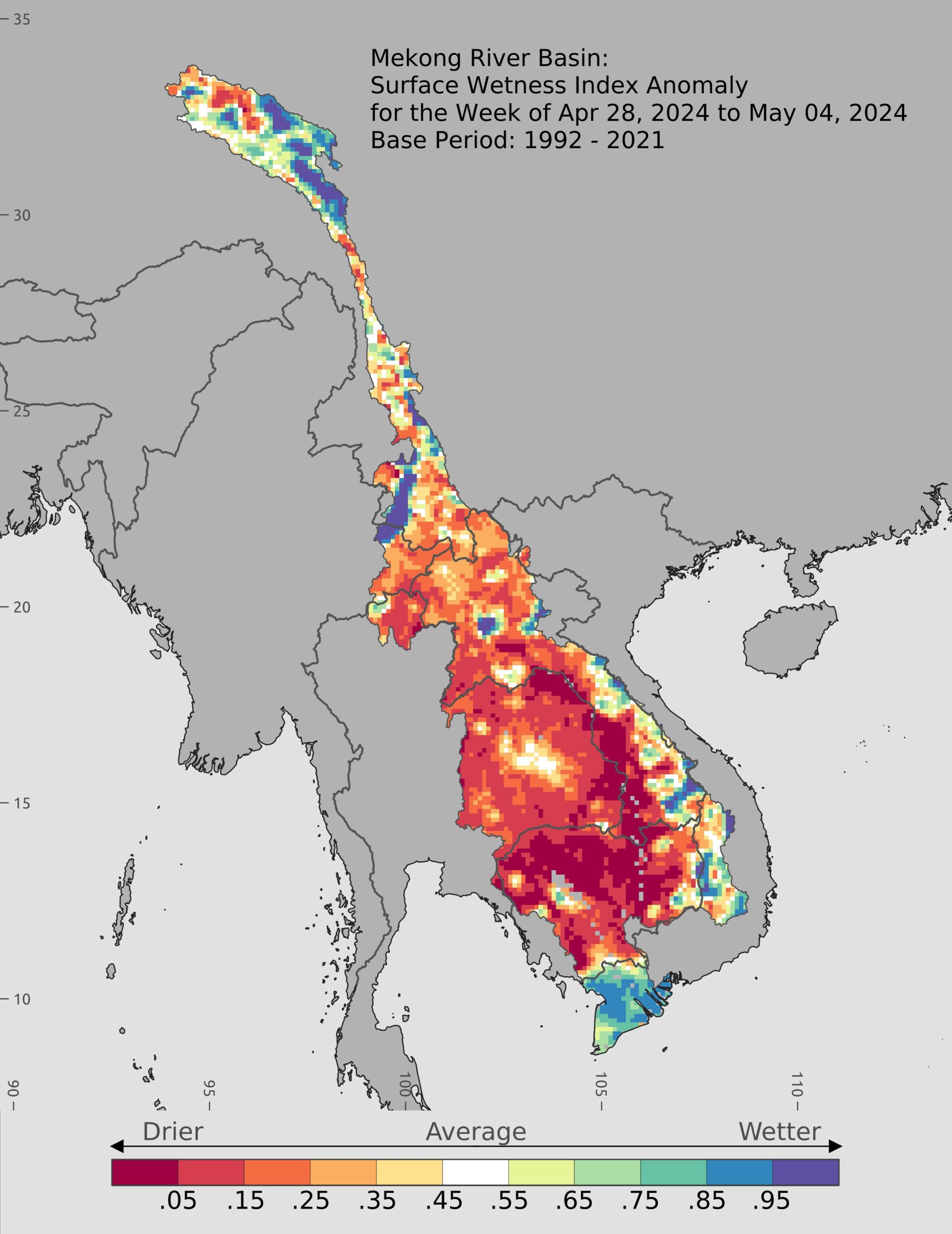






How Much Water is in Reservoirs by Country?
Current volume (billion cubic meters) of usable water across the 45 largest reservoirs in the Mekong Basin.
- Click or hover over icons on map for more details.
How Much Water is in the Largest Reservoirs?
- Hover over chart to track reservoir volume for any particular week during the year.
How Strong is the Floodpulse?

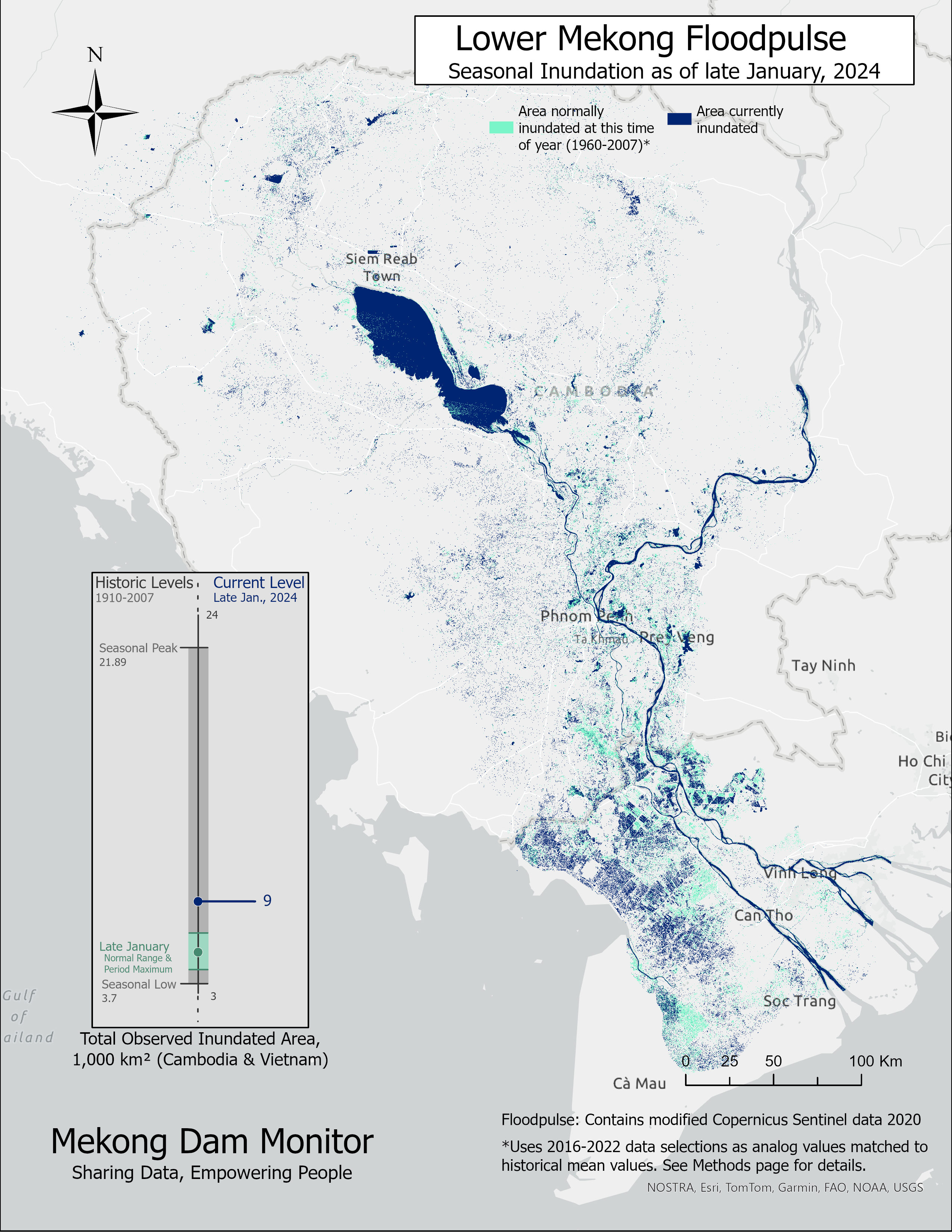



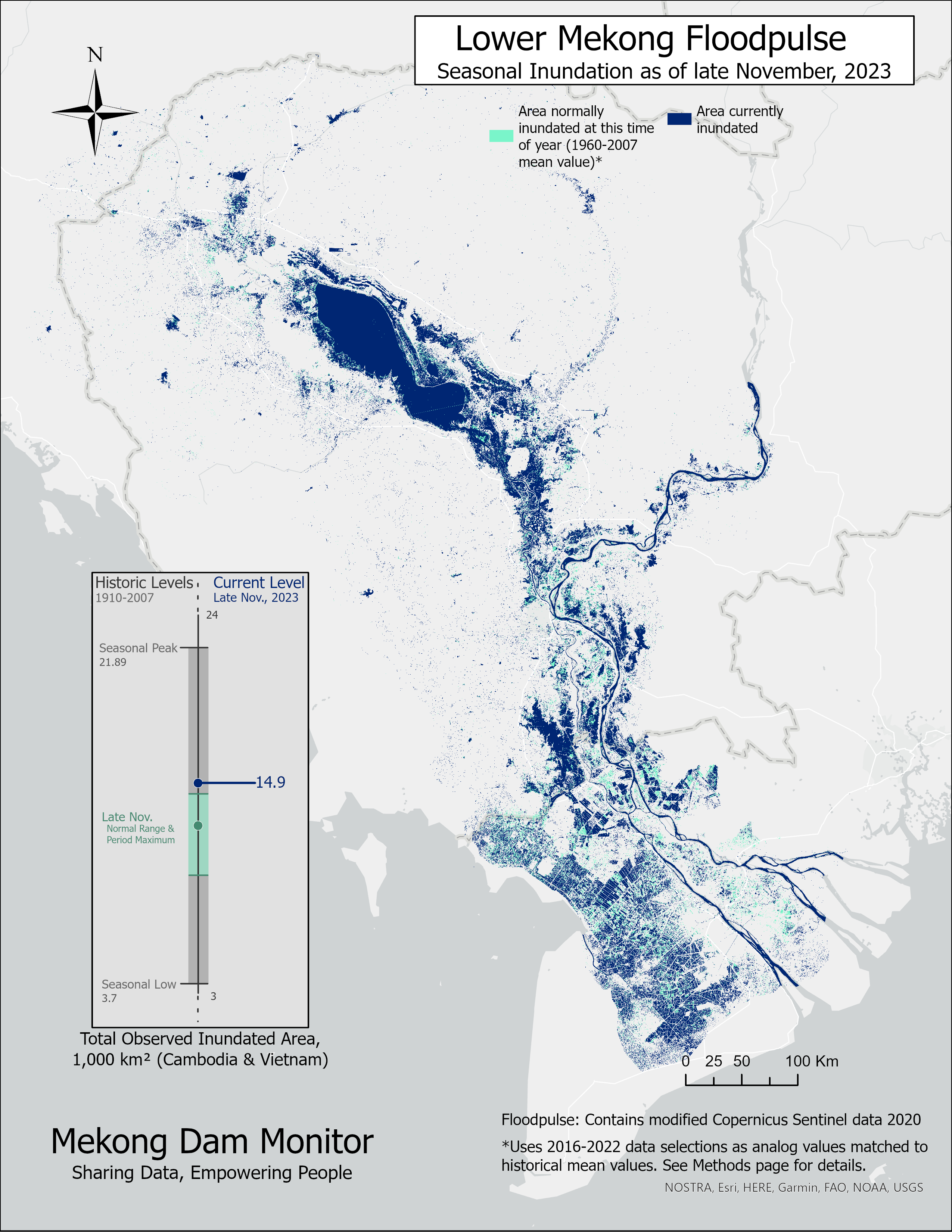


How Wet is the Mekong Floodplain?
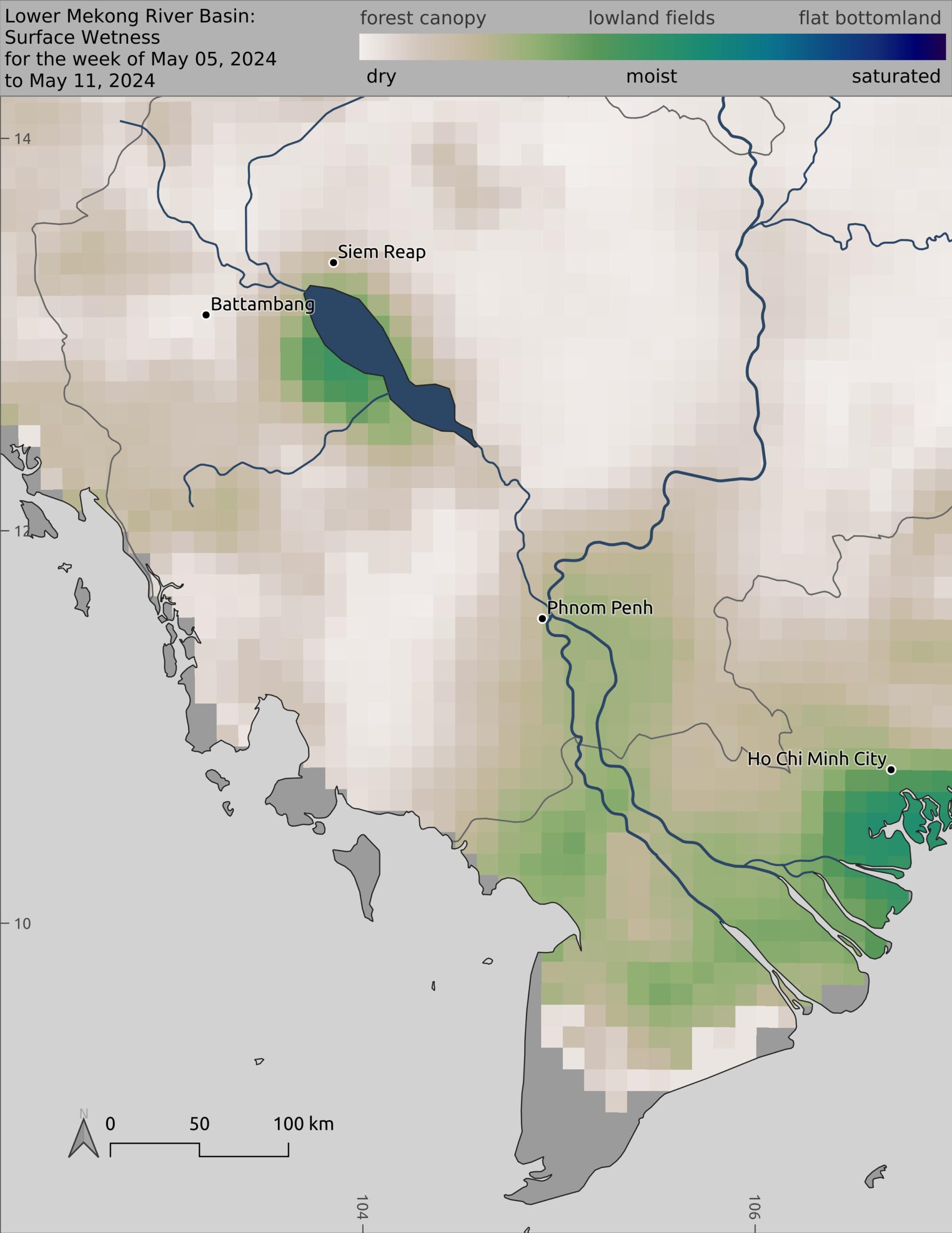

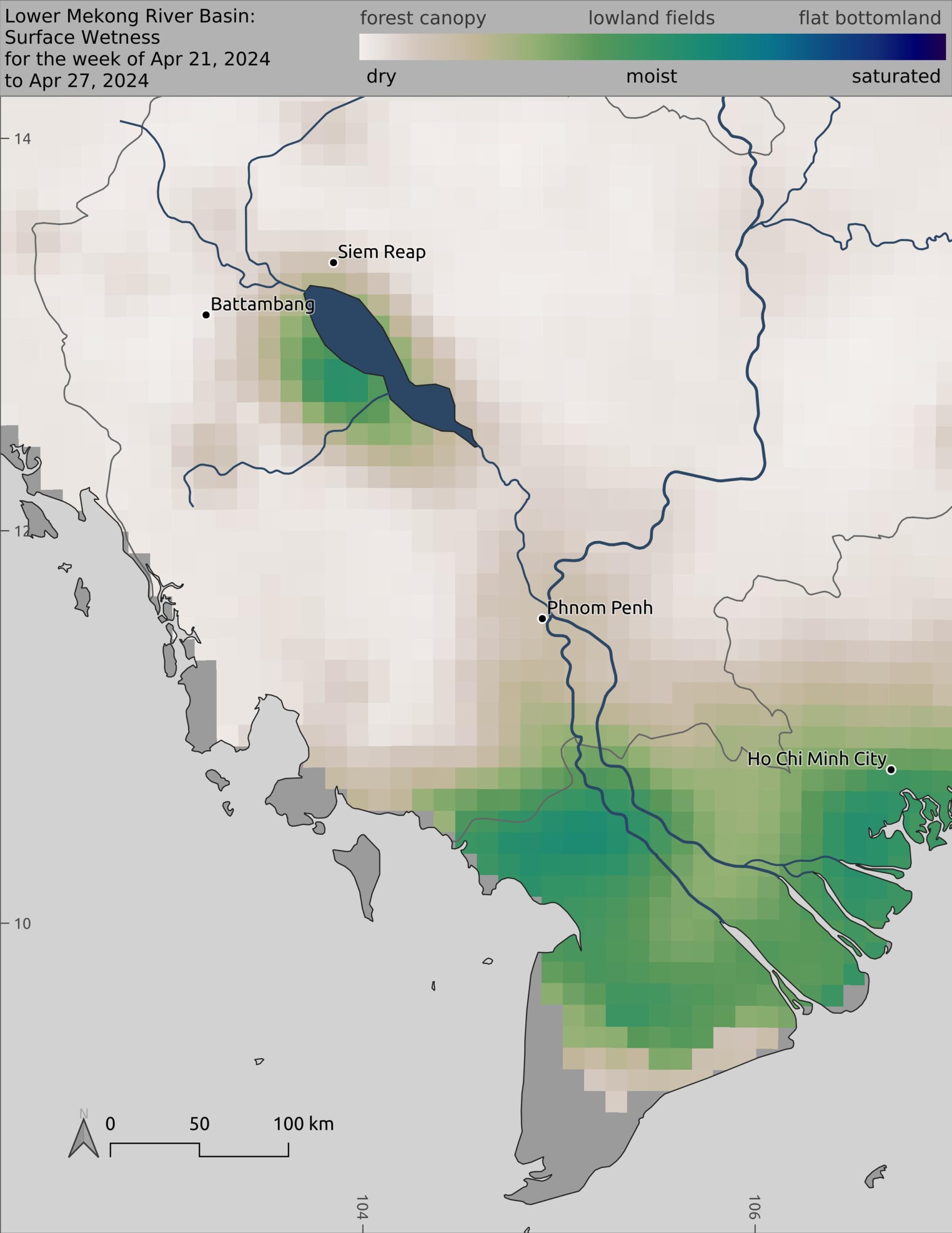
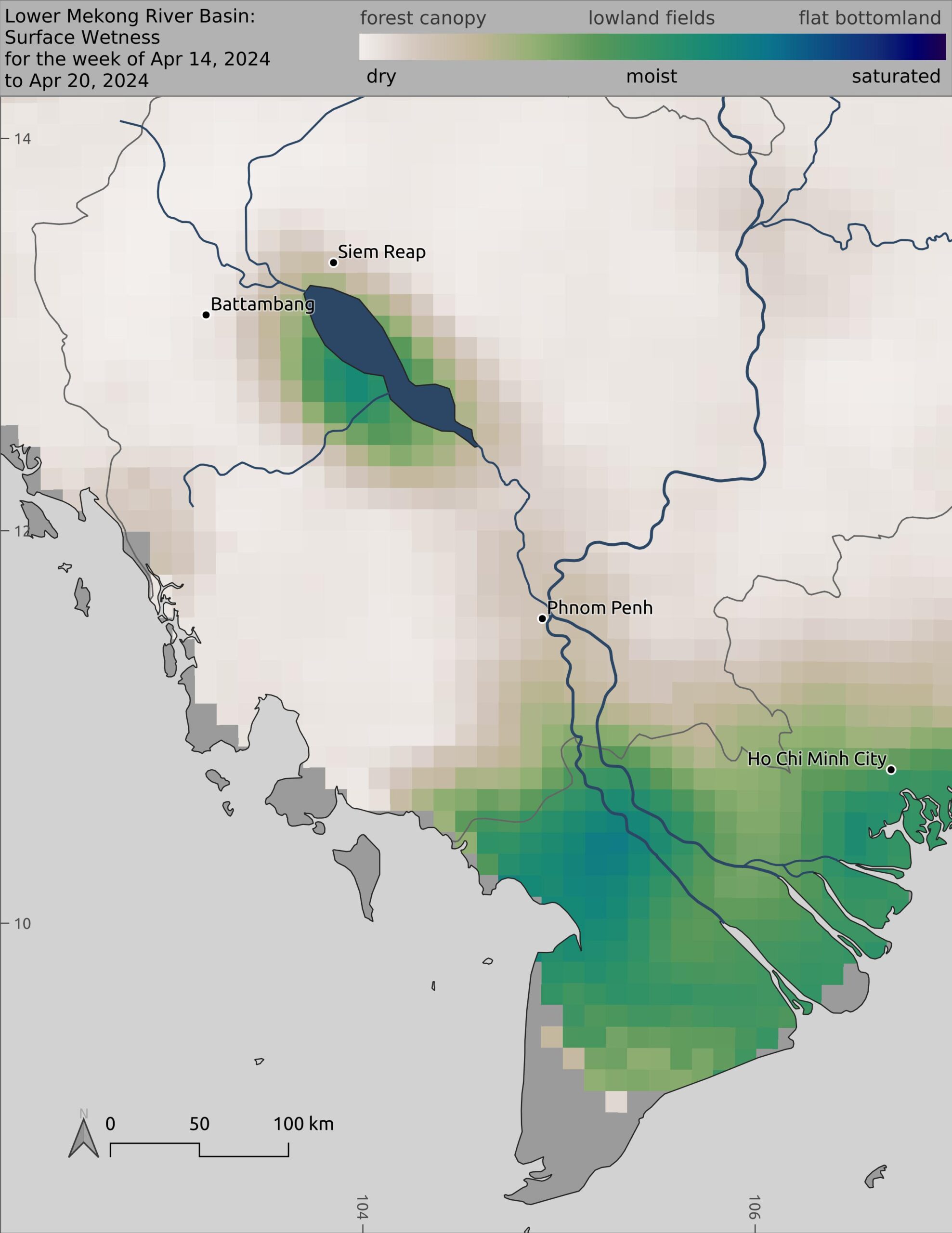




Where did River Flow Come From?



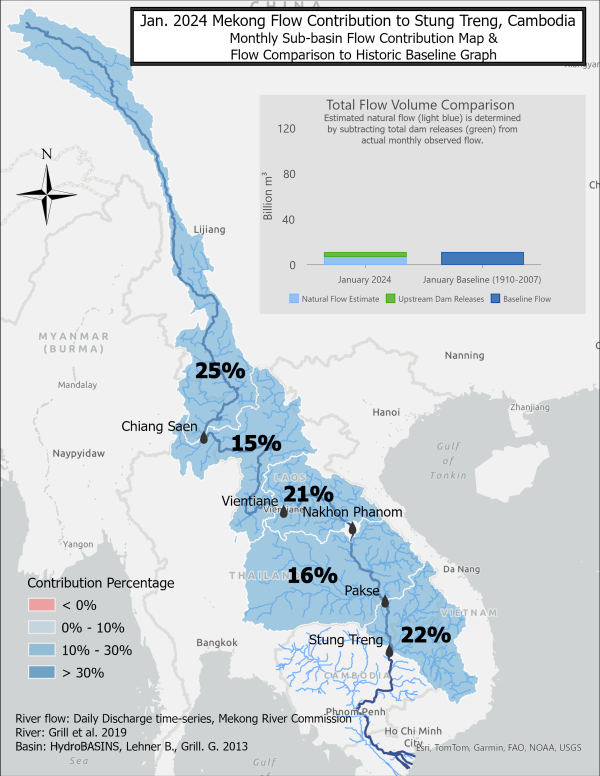


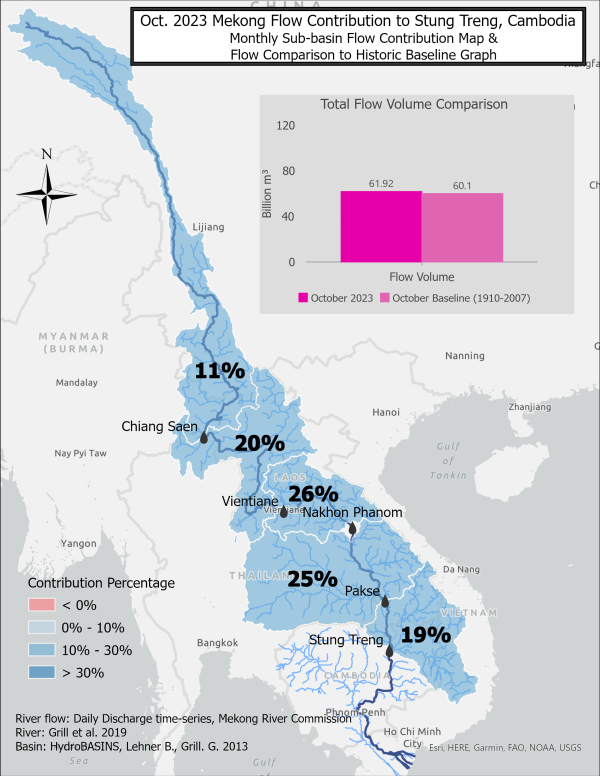

What Should River Levels Be?
Chiang Saen Gauge (Thailand)
Stung Treng Gauge (Cambodia)
Chau Doc Gauge (Vietnam)
For more info, click Natural River Flow Models in the top menu.
How do Dams Impact Different Points along the Mainstream?
Which Dams Impacted the Most?
- Click or hover over icons on map for more details.
Reservoirs with an estimated change of more than 50 million cubic meters (m³) of water over last 7 days.
For more info, click Virtual Gauges in the top menu.
Current Reservoir Volume for 55 Dams
- Hover over reservoir bars to see current or potential volume
For more info, click Virtual Gauges in the top menu.


